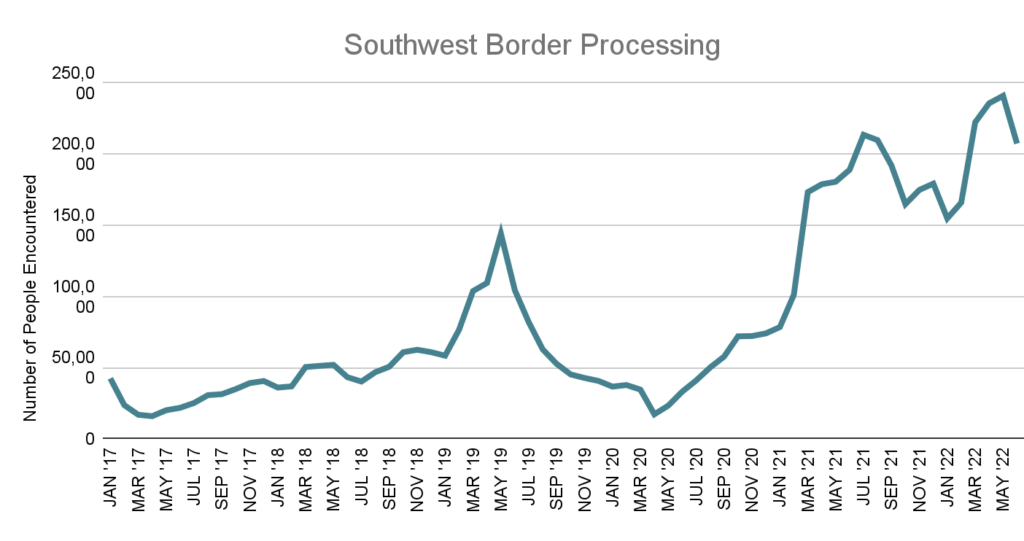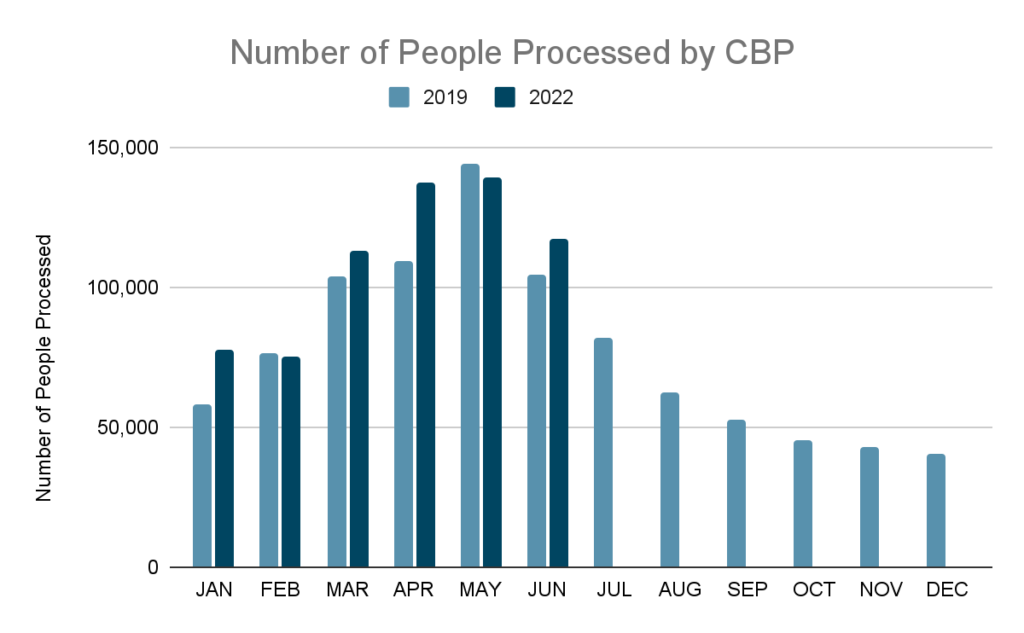Recently, there has been increasing concern over the growing number of encounters (the number of people apprehended) reported on the southwest border. U.S. Custom and Border Protection (CBP) data show 207,416 encounters in June 2022 — a record high. Many anti-immigrant groups misinterpret — or purposefully misuse — this data, suggesting encounters are akin to admissions or arrests. But citing that number alone to demonstrate the need for more robust deterrence policies ignores the impacts of Title 42 expulsions and discounts historical migration trends.
CBP tracks the number of noncitizens apprehended each month, known as “encounters.” Anti-immigrant groups have cited the high number of encounters in June 2022, stating that it is a dramatic departure from the typical amount of migrants entering the U.S. in other years — but that’s not the case.
The number of migrants at the southwest border demonstrates a return to regular migration trends. In a study of migration trends over the last decade, researchers found that there is consistently an increasing number of encounters between January and May, with a sharp decrease after June.
The Covid pandemic significantly disrupted these patterns. As a result, between March and June of 2020 the U.S. saw the lowest rate of encounters in years. In 2021, that number steadily increased, but the overall was still drastically lower than average. This year, we have seen a return to regular patterns, with numbers increasing in the spring and decreasing starting June.

Since March 2020, a significant portion of migrants at the southwest border have been subjected to rapid expulsion under Title 42. Although the administration has attempted to terminate the health order, the courts blocked its termination. The result is a recidivism rate for border crossers that is more than triple what it was before the pandemic. Moreover, the encounter data alone does not account for the continued rapid expulsions nor the amount of people who repeatedly attempt to enter the U.S.
Indeed, the number of people that CBP is processing now is comparable to 2019, before the implementation of Title 42 in response to the pandemic. There is only an eight percent difference in the number of people processed in 2019 compared to 2022. In February and May, the Trump administration processed more people in 2019 than the Biden administration in 2022.

Whenever there is a “surge” at the border, anti-immigrant groups use it as an excuse to call for and implement deterrence policies. Citing numbers of encounters without additional context has led to administrations repeating the mistake of using previously failed deterrence measures.
To counter this pattern, we should learn to anticipate when there will be higher numbers of people arriving at the border and improve processing capacity to efficiently and humanely process those seeking admittance to the U.S.